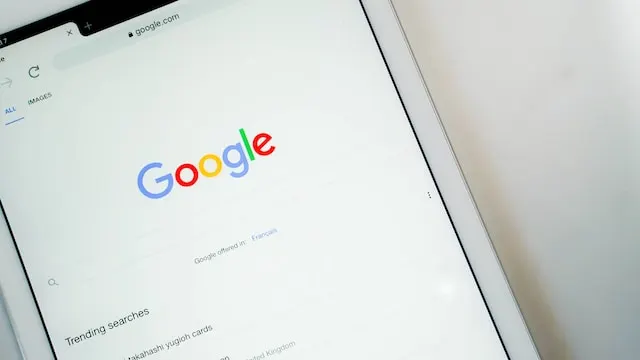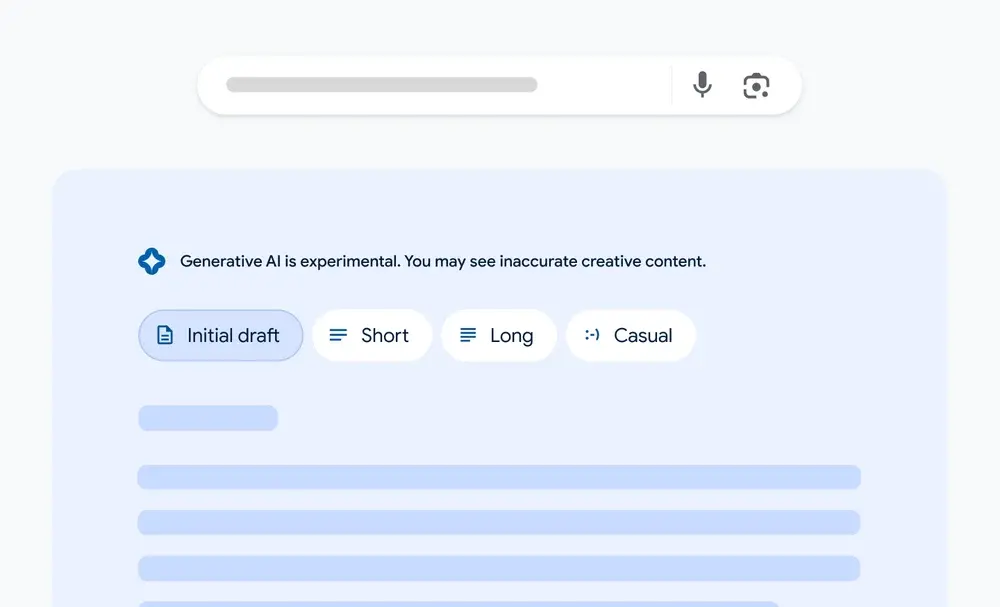In the rapidly evolving world of artificial intelligence, Google continues to push the boundaries of what’s possible with its latest enhancements to the Search Generative Experience (SGE). In recent updates, Google’s SGE has introduced two groundbreaking features – AI-generated images and customizable text drafts. These features are set to revolutionize the way users interact with the search engine giant and expand the capabilities of AI-driven tools.

Google Search Generative AI Images
Google is now taking on its competitors, like Microsoft’s Bing, with an exciting addition to SGE: AI-generated images. Similar to Bing’s support for OpenAI’s DALL-E 3, Google’s SGE allows users to request images by entering a prompt directly into the search bar. After a few seconds, the search engine generates four images that match the user’s request. But what sets Google’s feature apart is its interactivity – users can choose one of the images and further refine it by editing the description to add more details.
For example, if you ask Google to create “a funny dog image walking on moon surface,” you can modify specific aspects such as changing the mood of dog or altering the backdrop. This feature is designed to be user-friendly and sparks creativity.
Additionally, Google has made this feature available not only on Google Search but also in Google Images. When using Google Images, if you can’t find the exact image you’re looking for, you’ll see a button that allows you to access the AI image generation tool, and the creation process takes place in its own sub-window.
AI-Generated Image Policies
However, to ensure responsible use of AI-generated content, Google has implemented safeguards. These safeguards are in place to prevent the creation of content that goes against the company’s policies, such as promoting illegal activities, spreading misinformation, or generating explicit material that doesn’t serve educational or artistic purposes. Moreover, each generated image is labeled with “metadata labeling” and a watermark indicating it was created by an AI.
In the future, Google plans to provide more context about AI-generated content with an “About This Image” description. This feature aims to combat misinformation on the internet and promote transparency.
Currently, this experiment is available only in English to American users who have opted into the SGE program and are 18 years or older. Access to this feature is not guaranteed for everyone, as participation is subject to Google’s selection.
Customizable Text Drafts: Enhancing Your Writing Experience
In addition to AI image generation, SGE introduces another feature that can assist users who struggle with writing. Users can now ask SGE to generate text drafts for messages or emails. For instance, you can request the AI to “write a mail for asking for an appointment” for your new project. Once the draft is generated, you can import it into Google Docs or Gmail, where you can further customize it to reflect your own voice.

Google has ensured that the same level of protection provided under the Google Workspace umbrella applies to this content, ensuring the safety of your data.
The rollout of SGE text drafts is available to American users in English. While there is no word yet on international release plans, Google remains committed to expanding its offerings.
Responsible Implementation and Future Challenges
As with any technology that harnesses the power of AI, there are concerns about misuse. Google is well aware of this and is actively working to prevent the generation of harmful, misleading, or explicit content. Filters have been implemented to block content that violates the company’s policies. This includes preventing the creation of images with photorealistic faces and prompts that mention the names of notable people.
Google’s AI-generated images come with metadata embedded in the files, clearly identifying them as AI-generated, as well as an invisible watermark. These measures are designed to ensure transparency and accountability.
However, Google acknowledges that these tools are not perfect, and they continue to be opt-in. Users can provide feedback on misuses or issues with the technology, allowing Google to refine its filters and improve the overall experience.
Redefining the Future of Search
Google’s SGE is at the forefront of AI-driven search experiences, introducing capabilities that expand the creative and practical potential of AI. The integration of AI-generated images and customizable text drafts represents another step forward in making technology more accessible and useful to users. As Google continues to develop its AI-powered search features, we can anticipate even more innovative and transformative changes in the way we interact with search engines, making the future of search an exciting one.

